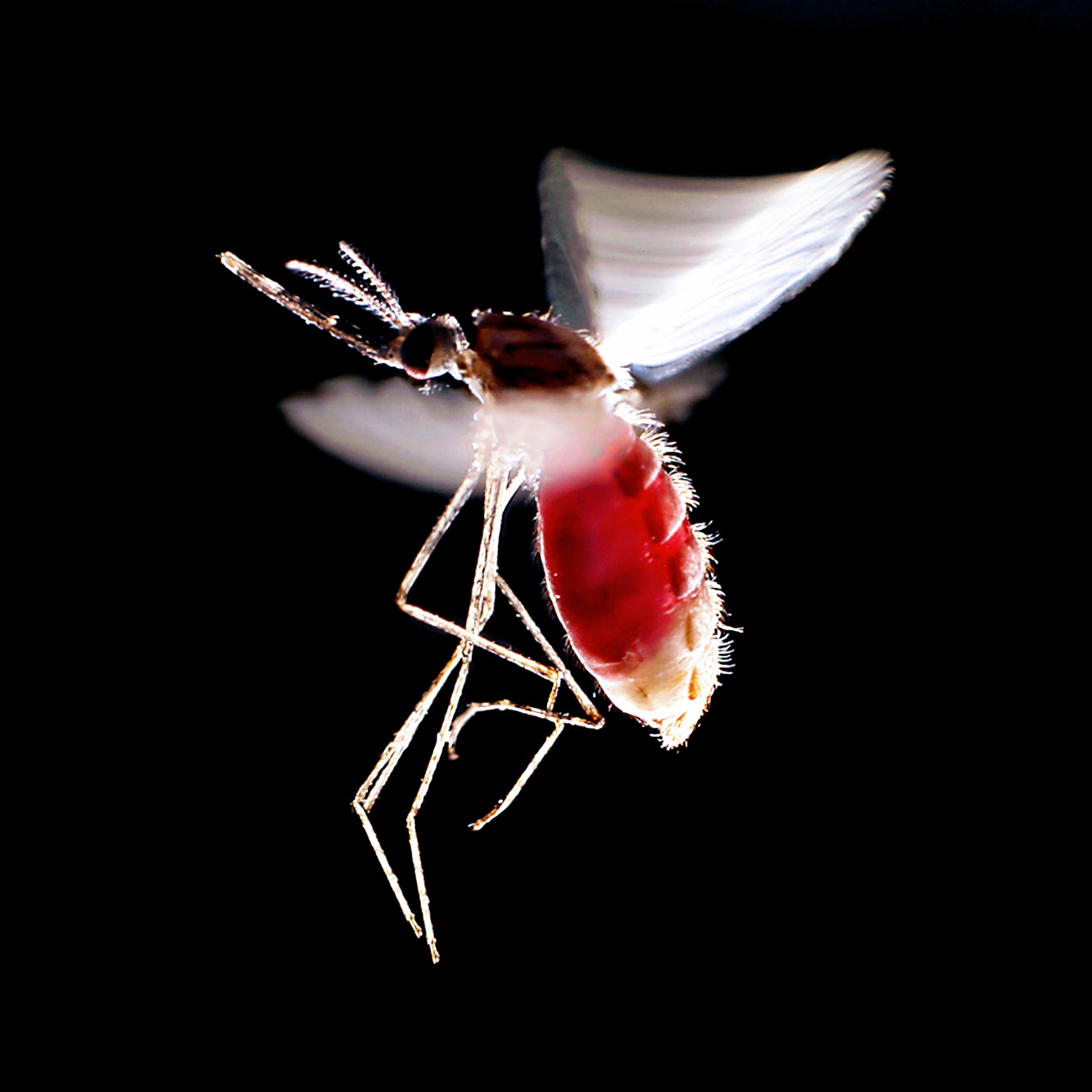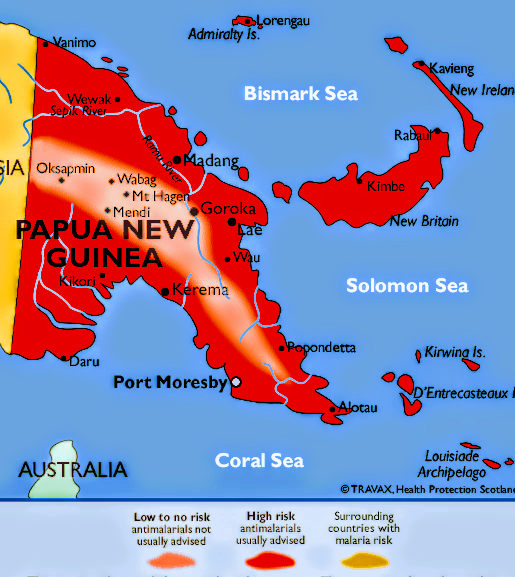
The lowlands of Papua New Guinea’s north coast have been a flashpoint in the shattering contest of mosquito versus human throughout history. Here people don’t so much die from malaria as endure it, morbidity outstripping mortality. Debilitating sickness reverberates through genetics, culture, prosperity and aspiration.
Malaria is particularly and powerfully entrenched in the communities here on PNG’s north coast and through the surrounding lowlands, where it has afflicted and shaped generations throughout history, a story written into their DNA.
There are four main types of human malaria. By far the most notorious and deadliest is Plasmodium falciparum, the biggest killer globally. By contrast, PNG has the world’s highest prevalence of P. vivax, which is difficult to control because it lingers in the body and relapses.
This type of malaria (P. vivax) inflicts relapsing illness on their carriers. This is the malaria tale familiar to so many travelers and soldiers who returned from the tropics to find themselves mysteriously floored by bouts of illness for years afterwards.
The location where Errol is believed to have first been stricken with malaria in or near New Britain – and the lifelong recurrent nature of his malaria, is evidence that he obtained it from “Ann” the female Anopheles mosquito, as did soldiers stationed in those same exact locations during World War II.

Conditions in the South Pacific Theater during World War II were harsh — thick jungle, high temperatures, heavy rainfall, swamps, excessive mud, and mountainous terrain made life difficult enough for Soldiers. But the environment was perfect for mosquitos. Disease, especially malaria, was rampant among the troops. Although dysentery and beriberi took their toll, malaria was by far the most devastating disease, causing more casualties than the enemy. In many cases throughout the campaigns malaria played a significant role in determining the outcome of battle.
The primary carrier of malaria was the species Anopheles minimus flavirostris, sometimes nicknamed “Ann” by the Soldiers. This type of mosquito thrived in the Pacific island regions, doing best in regions with swiftly-flowing, clear, shaded water.
— Tim

And you should post the symptoms and what kind of damages it does to a person. The long term effects on several organs. It might interest people. I always look at symptoms and long term effects for every disease as i was in the medical field. No one seem to mention that malaria desteoys the liver. Heart and kidneys..also can affect the brain
I am planning to include some of the symtoms and secondary effects, Selena, but I encourage you to do so. With your background especially, rhat would be great. The life-long recurrent nature and associated symptoms caused by “Ann” are key to understanding the suffering Errol recurrently went through, from the when he first waa contracted the disease in the late 1920s, recurrently throughout his life, to the last days of his life.
Here is a list of symptoms I have been working from:
A malaria infection is generally characterized by the following signs and symptoms:
Fever
Chills
Headache
Nausea and vomiting
Muscle pain and fatigue
Other signs and symptoms may include:
Sweating
Chest or abdominal pain
Cough
Some people who have malaria experience cycles of malaria “attacks.” An attack usually starts with shivering and chills, followed by a high fever, followed by sweating and a return to normal temperature.
With the “Ann” brand of malaria Errol was exposed to in New Guinea/New Britain/New Ireland, these symptoms can and often were recurrent for many years, even more so in the years Errol contracted malaria.
Malaria other than horrible symptoms while you are having an attack on a long term will effect your heart (causing heart failure), destroy your liver (causing jaundice as well), and attacks kidneys (failure). In some instances will also attack brain causing memory problems and brain fog. Also as it attacks spleen makes it hard to fight infections.
So taking all this into account we can see that it would have caused irreparable damages to Errol irgans as he fought malaria for 30 years.
Thank you, Selene. Very helpful to know.
I have essentially finished 90% of my next post on Errol’s malaria, and expect to post in the next couple of days. But please do post all the malaria info you wish to post. It is very welcome and of great help in developing a full biography of Errol’s life. Staying as prolific and productive as he did through so many serious and recurrent bouts of malaria makes his accomplishments even more astonishingly impressive.
Selene – Though I’ll be focusing on malaria in upcoming posts, I should also point out that Papua New Guinea is one of the most dangerous places in the world for contracting tuberculosis. Even today with the many advanced medical knowledge, treatments,and practices, not available in Errol’s PNG days, TB is extraordinarily prevalent. It remains one of PNG’s leading causes of death. Errol, as you know, also suffered from tuberculosis, which also is a disease which often lies dormant between recurrent bouts, those bouts increasing in severity and frequency as one’s immune system weakens. So, Errol actually had two life-long malicious maladies to contend with from his days in PNG.
Yes and tubercolosis did some serious damages to his lungs. After he collapsed in 1942 while filming Gentleman Jim xrays did find spots in his lungs.
Obviously his smoking didnt help the serious disease . I always wondered where he got TB. PNG seems a very good place to contract it. I also believe it was dormant, or non contagious, even tho he gave him health problems throughout life.
My uncle was in PNG during ww2 got malaria had bouts the rest of his life plus a few other illness